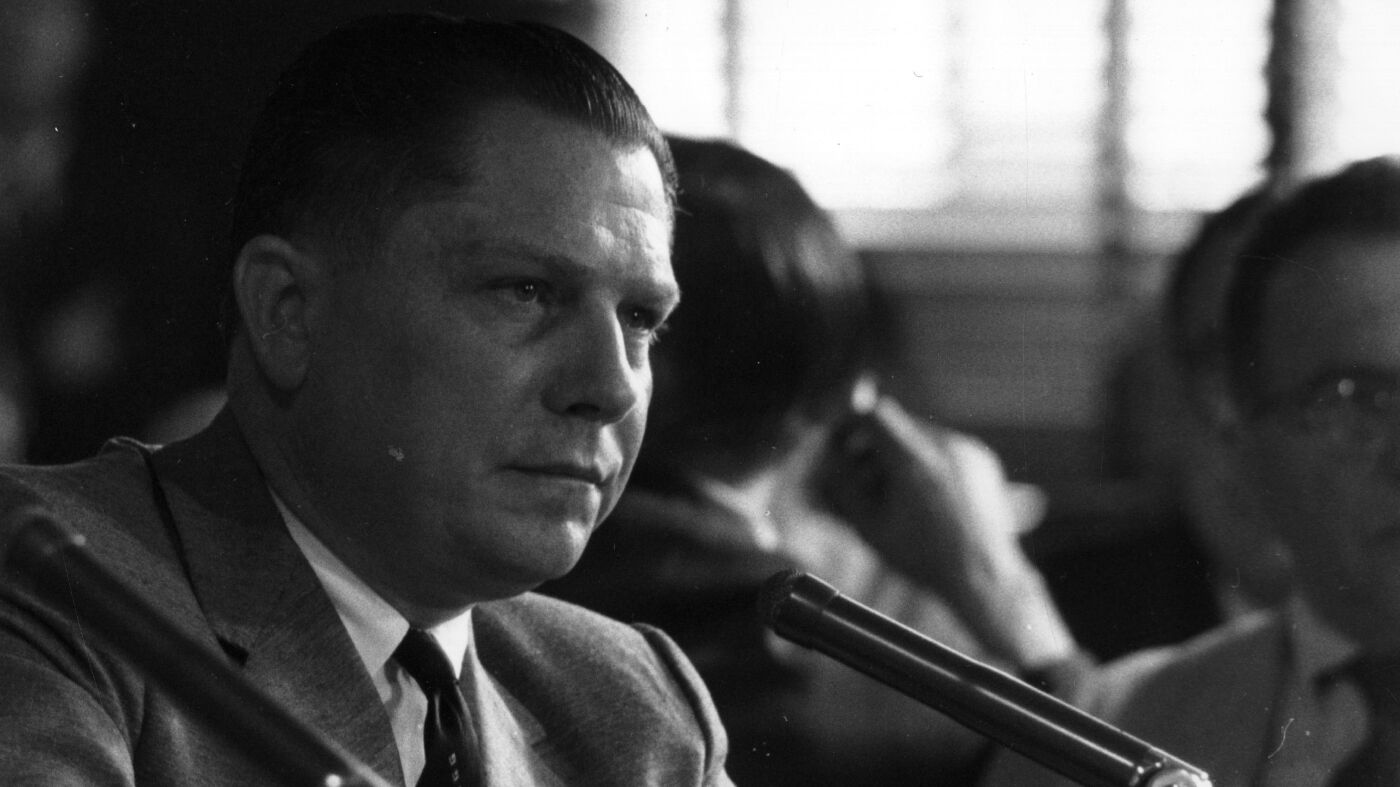The Enduring Enigma: Jimmy Hoffa’s 50-Year Disappearance
A Titan of Labor
James Riddle “Jimmy” Hoffa, born in 1913, emerged from the coal mines of Brazil, Indiana, to become one of the most powerful figures in American labor history. His father’s early death left the family in financial turmoil, shaping Hoffa’s lifelong commitment to workers’ rights. By the age of 22, he had already begun organizing truck drivers, a role that would define his career.
Hoffa’s ascent within the Teamsters Union was meteoric. By 1957, he became the union’s president, transforming it into a formidable force with over 1.5 million members. His tactics were both brilliant and controversial. He mastered the art of collective bargaining, securing unprecedented benefits for workers while simultaneously cultivating relationships with powerful figures in both the political and criminal underworlds.
His influence extended beyond labor negotiations. Hoffa was a master networker, forging alliances with politicians, business leaders, and even organized crime figures. This duality—his ability to operate in both legitimate and illicit spheres—made him a polarizing figure. To his supporters, he was a champion of the working class; to his detractors, a symbol of corruption and mob influence.
The Day He Vanished
The events of July 30, 1975, remain etched in the annals of American crime. Hoffa, then 62 years old, had been released from federal prison just two years earlier after serving time for jury tampering, fraud, and attempted bribery. Despite his legal troubles, he remained a powerful figure within the Teamsters, and rumors swirled that he was attempting to regain control of the union.
That afternoon, Hoffa was scheduled to meet with two men at the Machus Red Fox restaurant in Bloomfield Township, Michigan: Anthony Provenzano, a New Jersey Teamsters leader with alleged mob ties, and Anthony Giacalone, a Detroit mobster. The meeting was supposed to discuss Hoffa’s return to power within the union.
Witnesses reported seeing Hoffa in the restaurant’s parking lot, where he was last seen entering a maroon Mercury Marquis Brougham. What happened next is the subject of endless speculation. Hoffa was never seen again, and his disappearance triggered one of the most extensive manhunts in American history.
Theories and Speculation
The absence of a body has fueled decades of theories, ranging from the plausible to the outright fantastical. Given Hoffa’s deep connections to organized crime, many believe the Mafia was involved in his disappearance. One prevailing theory suggests that Hoffa was killed to prevent him from regaining control of the Teamsters, which had become a lucrative source of income for the mob through pension fund investments.
Another theory, recounted by notorious hitman Richard Kuklinski, claims that Hoffa was stabbed in the head with a hunting knife and his body was disposed of in the trunk of Kuklinski’s car. Kuklinski alleged that the body was later incinerated in a furnace, though this account has never been verified.
Other theories point to various locations across the country. Some believe Hoffa’s body was buried beneath the Giants Stadium construction site in New Jersey, while others suggest it was hidden in a Florida landfill. Despite numerous searches and investigations, no concrete evidence has ever surfaced to confirm any of these theories.
The Role of the FBI
The FBI’s involvement in the Hoffa case has been relentless. The agency has pursued countless leads, interviewed hundreds of witnesses, and executed numerous search warrants in an effort to solve the mystery. The Detroit Field Office has kept the case open, underscoring the FBI’s commitment to uncovering the truth.
Over the years, the FBI has focused on several potential burial sites, including a horse farm in Michigan and a landfill in New Jersey. In 2006, the agency even exhumed a grave in a Detroit cemetery after receiving a tip that Hoffa’s body might be buried there. The remains, however, did not belong to Hoffa.
Despite these efforts, the case remains unsolved. The FBI’s inability to find definitive evidence has only deepened the mystery, leaving the public to wonder whether Hoffa’s disappearance will ever be fully explained.
The Enduring Impact
The disappearance of Jimmy Hoffa has left an indelible mark on American culture. The case has been the subject of countless books, films, and television shows, cementing its place in the public imagination. Hoffa’s story serves as a cautionary tale about the dangers of power, corruption, and the blurred lines between organized labor and organized crime.
The mystery surrounding his fate continues to fascinate and intrigue, drawing new generations into the search for answers. The case also highlights the challenges faced by law enforcement when dealing with complex investigations involving organized crime and powerful figures.
A Cold Case, a Lingering Question
Fifty years have passed since Jimmy Hoffa vanished without a trace. While the passage of time has diminished the likelihood of finding definitive answers, the allure of the mystery persists. The case stands as a testament to the enduring power of secrets and the human desire for closure.
Perhaps one day, new evidence will emerge, or a long-held secret will be revealed, finally bringing an end to this chapter of American history. Until then, the legend of Jimmy Hoffa and the mystery of his disappearance will continue to captivate and intrigue, serving as a reminder of the enigmatic and often dangerous world of power and influence.

